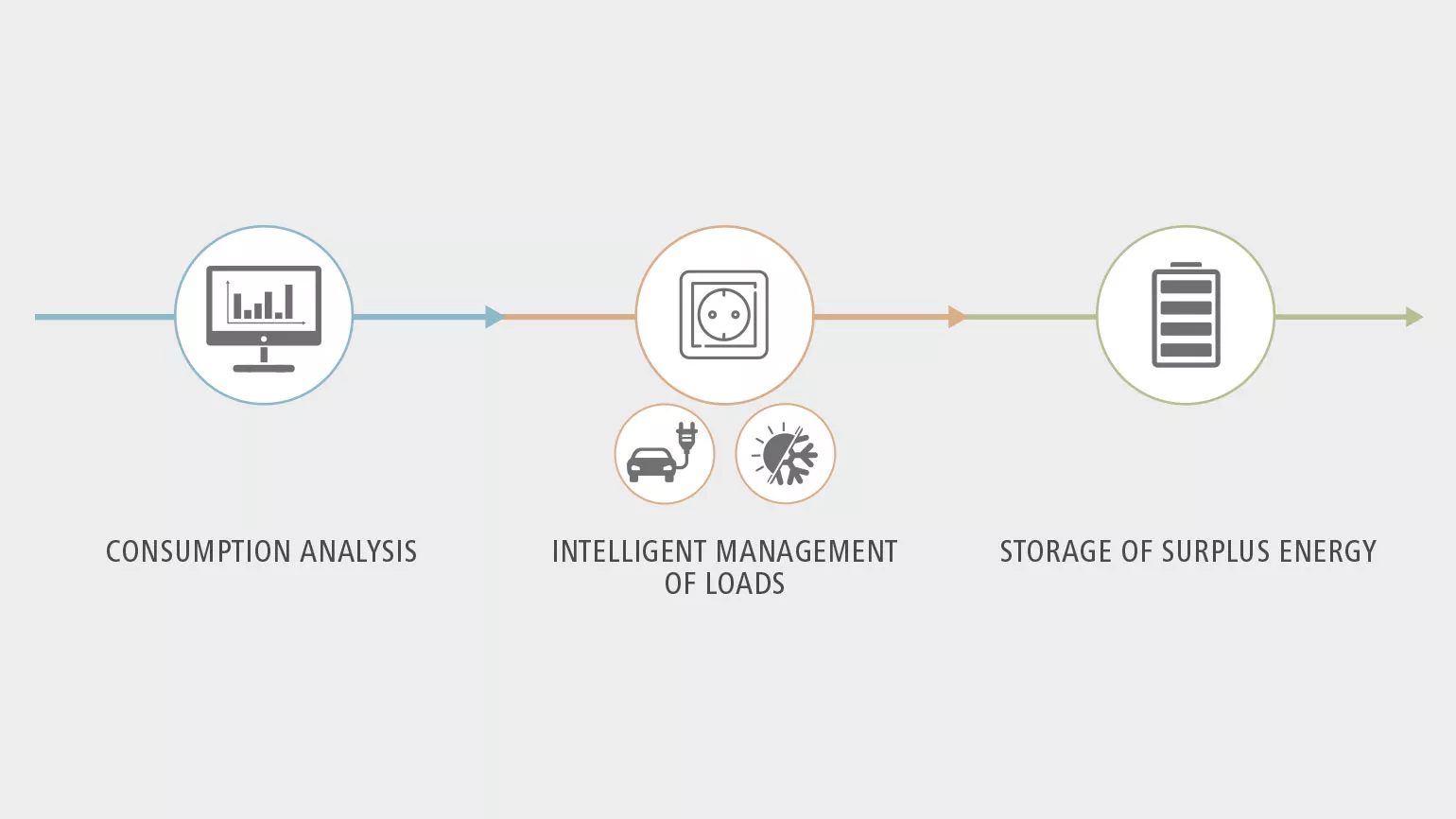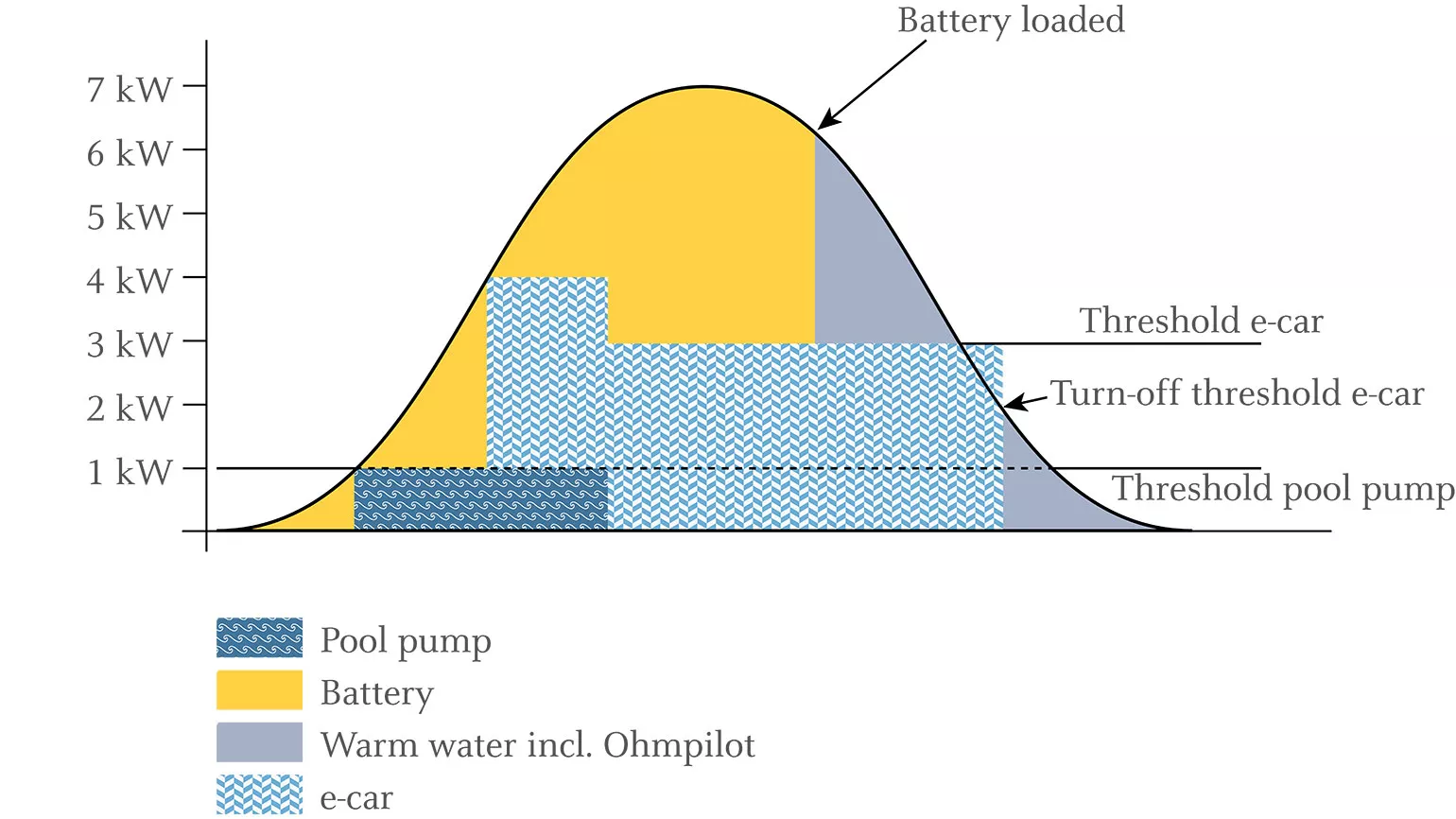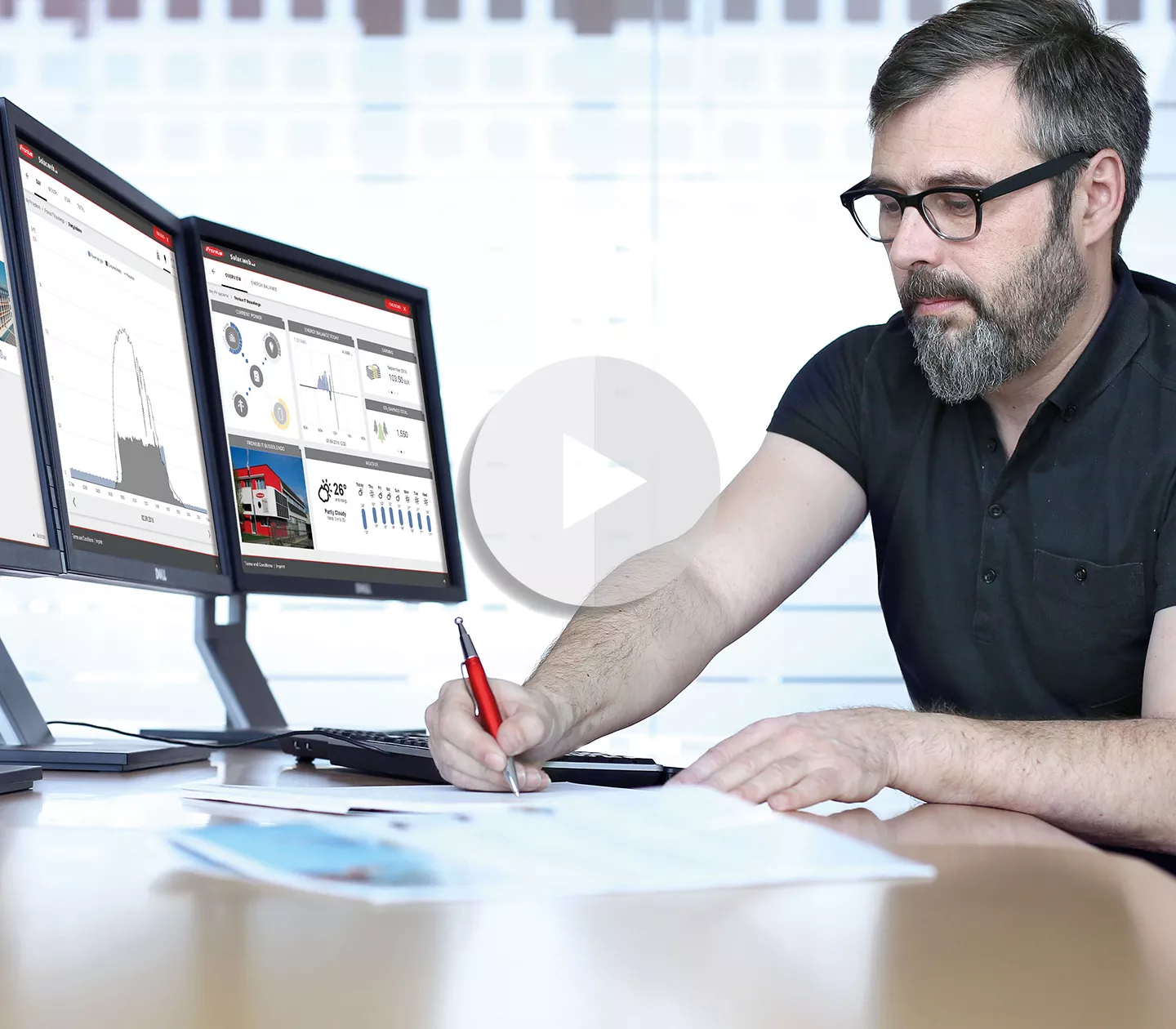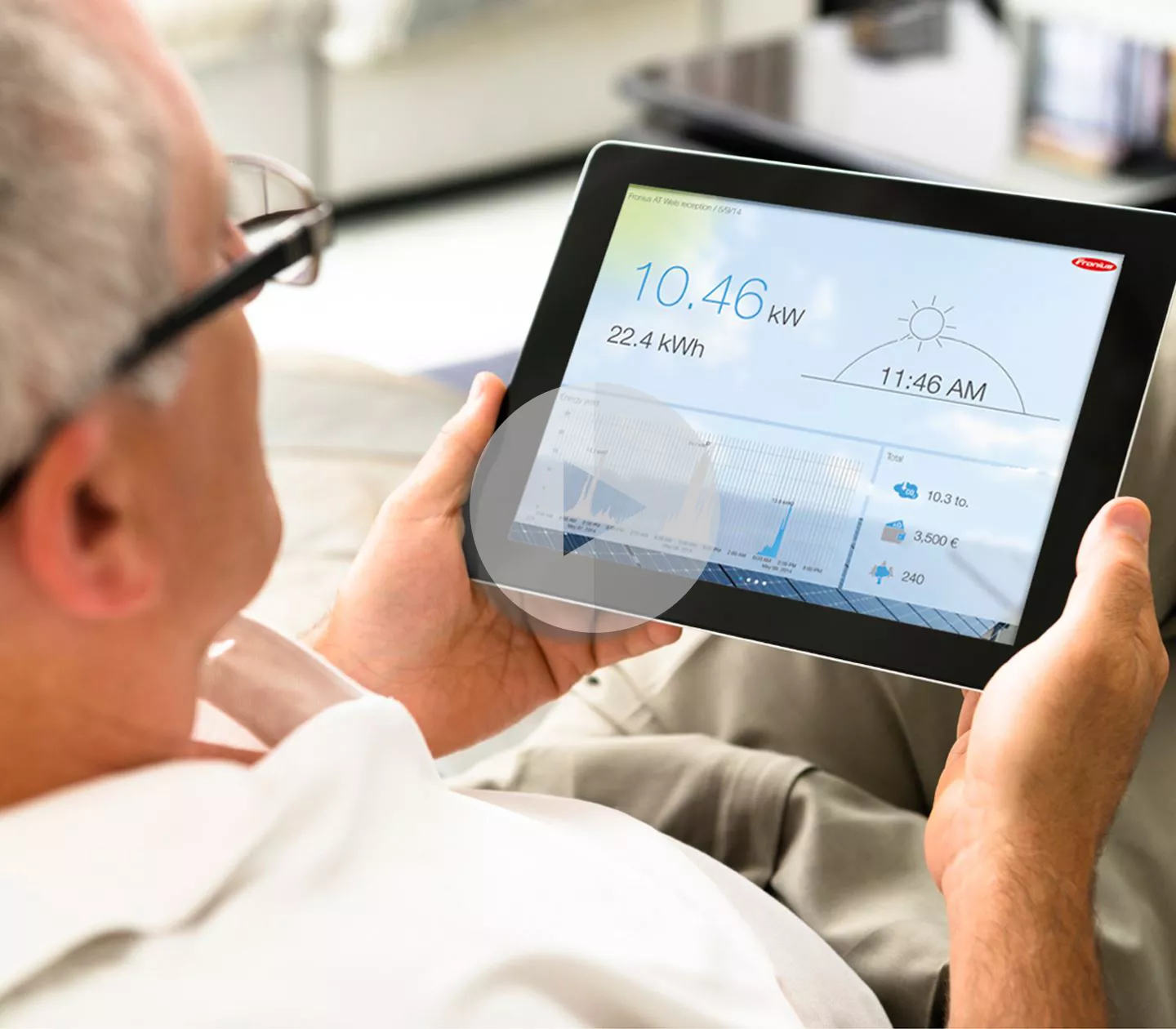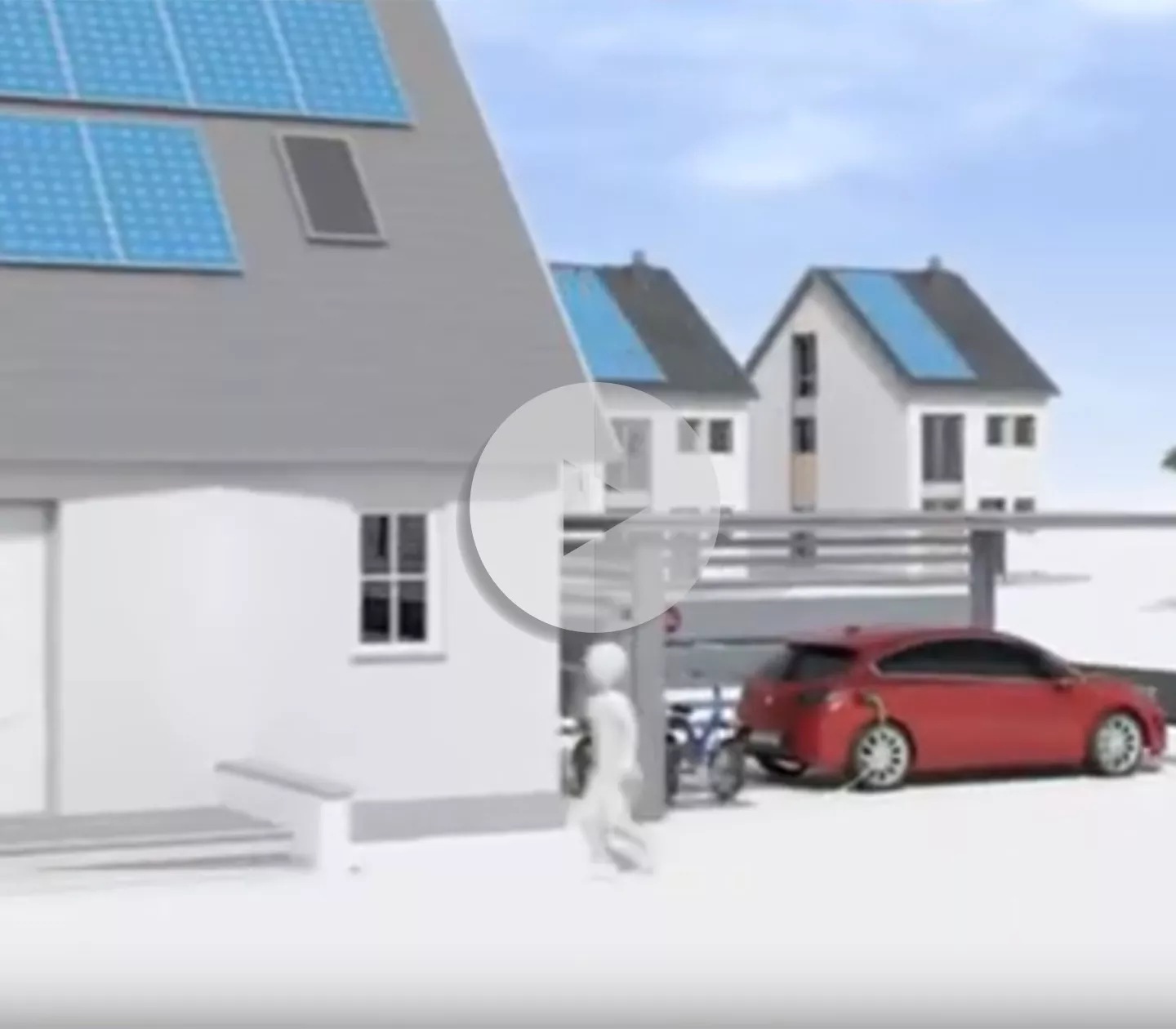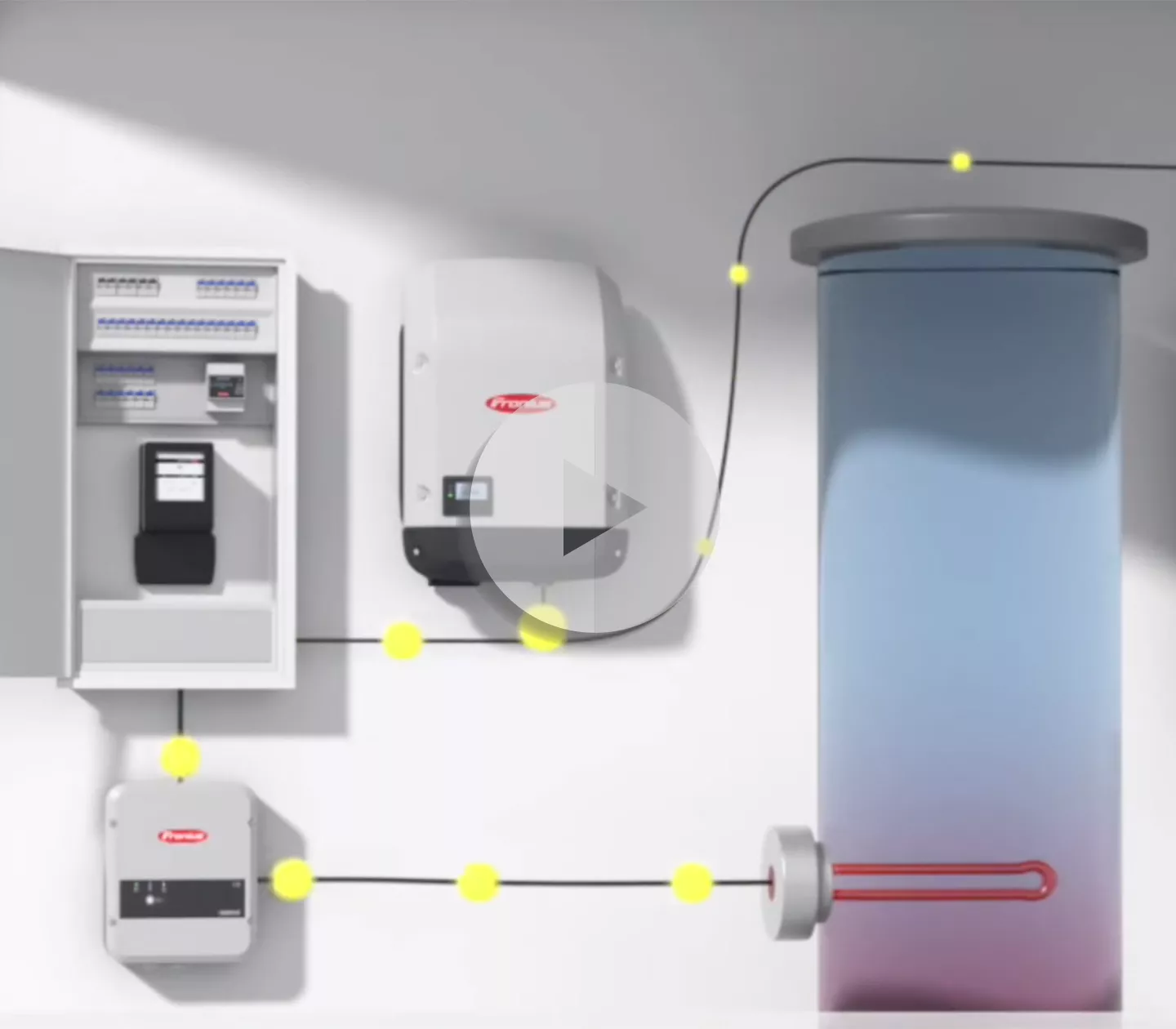Get even more out of your self-generated energy. Four digital outputs make it possible.

Energy flow management in three steps
The
energy flow management functions as usual: in the first step, the Fronius Smart
Meter measures how much power is being fed into the grid and how much is being
drawn from it. This data can then be displayed in the Fronius Solar.web online
portal and analysed.
In
the second step, the loads and the consumers are defined. For example, these
could be a heat pump, a pool pump, a wallbox for charging an electric car or an
air conditioning system. The digital outputs allow up to four consumers to be
prioritised with PV energy. This means that, when there is a surplus of PV
energy, it will be used for your own consumers first.
When combined
with a battery or a thermal storage solution, the four digital outputs provide
the perfect opportunity to maximise your rate of self-consumption. With the Fronius
Ohmpilot and the Fronius Energy Package, Fronius has two solutions that allow
excess energy to be used to generate heat, for example for hot water, and
excess energy generated during the day to be used at night time.
Digital outputs, Fronius Ohmpilot and Fronius Energy Package
It is now possible to assign different levels of priority to the digital outputs, the Fronius Ohmpilot and the battery. For example, if there is a pool pump, a wallbox used to charge an electric car, a battery and a Fronius Ohmpilot, the order of priority could be as follows:Priority 1: Load management with four digital outputs
Priority 2: Battery
Priority 3: Fronius Ohmpilot
The consumers connected to the four digital outputs are the top priority and are prioritised within themselves according to their set switch-on threshold, which means that the consumer with the lowest power will be switched on first. In this case, this is the pool pump (1 kW), followed by the wallbox (3 kW) used for charging the electric car. The rest of the energy is stored in the battery, so that solar energy can be used during the evening and at night. Finally, any remaining energy is used by the Fronius Ohmpilot to heat water. The energy is therefore stored in the form of heat in the water.

